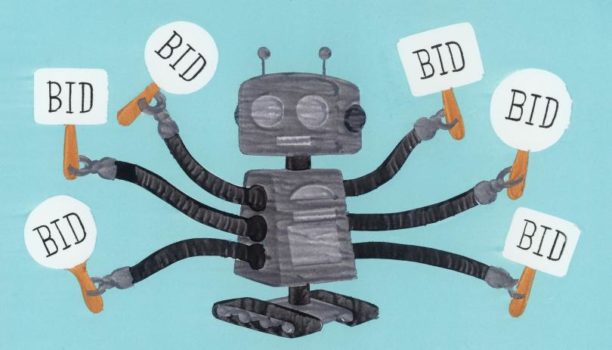It’s Not 'If' You Should Adopt Programmatic, But 'How': Q&A With Tom O’Donnell, Gumtree
by Lindsay Rowntree on 25th Jan 2016 in News

In association with OpenX
With minimal barriers to entry, publishers and buyers alike can realise revenue benefits through programmatic advertising; but only with a rigid understanding of the technology and an effective commercial and pricing strategy.
As programmatic continues its rapid evolution, the skills gap for publishers trying to keep pace with the technology is widening, according to research by programmatic marketplace provider OpenX. All respondents to its survey – 23% of whom were publishers – said they needed further education to reap the rewards of programmatic efficiency.
This week, OpenX launched its School of Programmatic initiative – a series of workshops designed to fill these knowledge gaps and supply the skills and know-how needed to make the most of programmatic.
The first session – The Core Concepts of Programmatic – was held on 19 January in central London. Guest speaker Tom O’Donnell (pictured below), head of advertising proposition and programmatic, Gumtree, joined Andrew Buckman, managing director EMEA, OpenX, to introduce ‘Programmatic 101’.
After the session, ExchangeWire caught up with Tom O’Donnell to discover the secrets behind Gumtree’s successful adoption of programmatic technology.
ExchangeWire: How would you summarise the evolution of programmatic?
Tom O'Donnell: Programmatic exists now because the ecosystem invested heavily in it, believing it was going to improve and simplify digital advertising. Practitioners now know that while some areas have become simpler and more efficient, programmatic can be much more complicated and resource-intensive than we could have imagined all those years ago.
Why did Gumtree decide to adopt programmatic?
We like to be early adopters in what we do and it was a chance to try something new. Being a classifieds site, we rely partially on advertising to keep our site free for our users. Programmatic looked like a great opportunity to increase yields by leveraging our data and audience. We don’t sell our data to third parties; instead, we layer first-party data and audience profiles on top of our media. This enables more relevant advertising to reach the user, which drives up performance and allows us to charge higher prices.
What are the benefits of adopting programmatic for both advertisers and publishers? What are the benefits that Gumtree has experienced?
The key benefit for buyers is they can use first-party data to access their audience at scale with minimal barriers to entry and investment. For sellers it’s the ability to tap into multiple sources of demand and monetise more of their inventory. Increased revenue is the simplest way to sum-up the benefits we have experienced at Gumtree; but these revenue benefits can only be realised with an appropriate pricing and commercial strategy. For Gumtree, that strategy is about clearly defining value levels for the buyer and ensuring programmatic complements our inventory, rather than undercutting or devaluing it.
What is data explosion and why is it important?
The data explosion is a bit of a myth really. Publishers and buyers have always used data, but we can now execute that data more easily than before. First-party data is increasingly important, and for some companies it’s really the only unique asset they have. Understanding how to use first-party data effectively in buying or selling media to drive increased performance is the difference between a programmatic success story and a failure. The size of the company doesn’t matter; it’s all about how unique the data is, how it’s executed, and whether the data is locked down so other parties can’t scrape or buy it. This is the main reason we saw large-scale adoption of data management platforms last year, and will continue to do so this year.
What are the buying and selling models that publishers and advertisers should consider, such as open exchanges or programmatic guaranteed?
There are three main programmatic models to consider. In the open exchange, or open auction model, inventory is pooled into branded inventory, where the seller URL is exposed to the buyer, or anonymous inventory where the seller is masked to the buyer. For buyers, an open exchange is the easiest and quickest way to buy media, but it can also be a minefield if they don’t know what they are doing. For sellers, the open auction is the Wild West – an easy-open tap to revenue, and smart sellers use it as a prospecting tool.
Next up is a private auction, where the buyer gets priority access to a specific pool of inventory at a fixed price. The seller is able to achieve higher CPMs and deliver specific first-party audience campaigns or content, but there are rarely contractual commitments to buy.
Lastly, a new model has emerged in the form of programmatic guaranteed, but this is still in its infancy. This is a private auction, but involves a commitment to buy a specific amount of inventory by audience or type. For both buyers and sellers, this new model removes a lot of the uncertainty that private auctions with no commitment can bring.
Which selling model does Gumtree use, and why?
We use open exchanges and private auctions, both of which saw extraordinary growth last year, with private auction spend doubling from the previous year. We plan to run programmatic guaranteed when we feel it has reached a level where it fits for us, but the model currently has quite a few kinks to work out. Programmatic guaranteed has real potential to shift programmatic to another level, allowing the sell side to optimise campaigns and use publisher resources to increase performance. Instead – in the short term – we will focus on native app advertising. At Gumtree, over 60% of our visits come from mobile devices, and I believe over the coming years we will see the banner phased out on mobile devices and replaced with custom native executions.
How can publishers smoothly integrate programmatic within their direct sales operations?
This is a complex question because programmatic and sales operations were initially at loggerheads in the industry. We spent 2015 educating and up-skilling our sales operation by running programmatic training and knowledge quizzes throughout the year. We also fully trained the entire display team in data analytics tools, such as Tableau, which arms them with the information needed to sell programmatically and to help clients. Pricing and strategy is key to balancing programmatic and direct sales. I see many publishers continuously undercutting their sales teams by offering quality inventory at lower rates programmatically, and then wondering why their direct sales decrease. We encourage buyers to work with our sales team to identify suitable private auctions which are powered by our first-party data and optimised using our operations and analytics functions. As with most things in life, it’s all about getting the right balance.
What are the key questions companies looking to adopt programmatic should be asking, but may be too afraid?
It’s not about if you should adopt programmatic, but how. It’s clear the market is shifting in that direction but the method of execution is up to each individual company.
How is Gumtree working to monetise mobile in such a competitive marketplace?
We already have the product – a fully responsive website and apps for tablet and smartphone on both iOS and Android – as well as the audience and data capabilities. Now it’s simply a question of what formats to run. This year, we will trial shifting our in-app formats from banners to native advertising and partnerships. The banner has sufficed up to now, and has generated fairly good value, but we need to evolve both as an industry and as a publisher. Once programmatic native comes into full force this year it will certainly cause a shift in budgets, and we have some pretty cool initiatives in the pipeline which should put more nails in the banner’s coffin.
The next session at the School of Programmatic – Programmatic On the Go – will take place on 16 February and will be held at the Hospital Club, Covent Garden, from 8.30am to 11am. Attendees will learn how to plan the ultimate cross-screen campaign, discover unique considerations for buying on mobile, and find out which mobile ad formats are the most engaging.
For more information on future sessions and to register for a place please click here.
DataDisplayMobileProgrammaticPublisher








Follow ExchangeWire